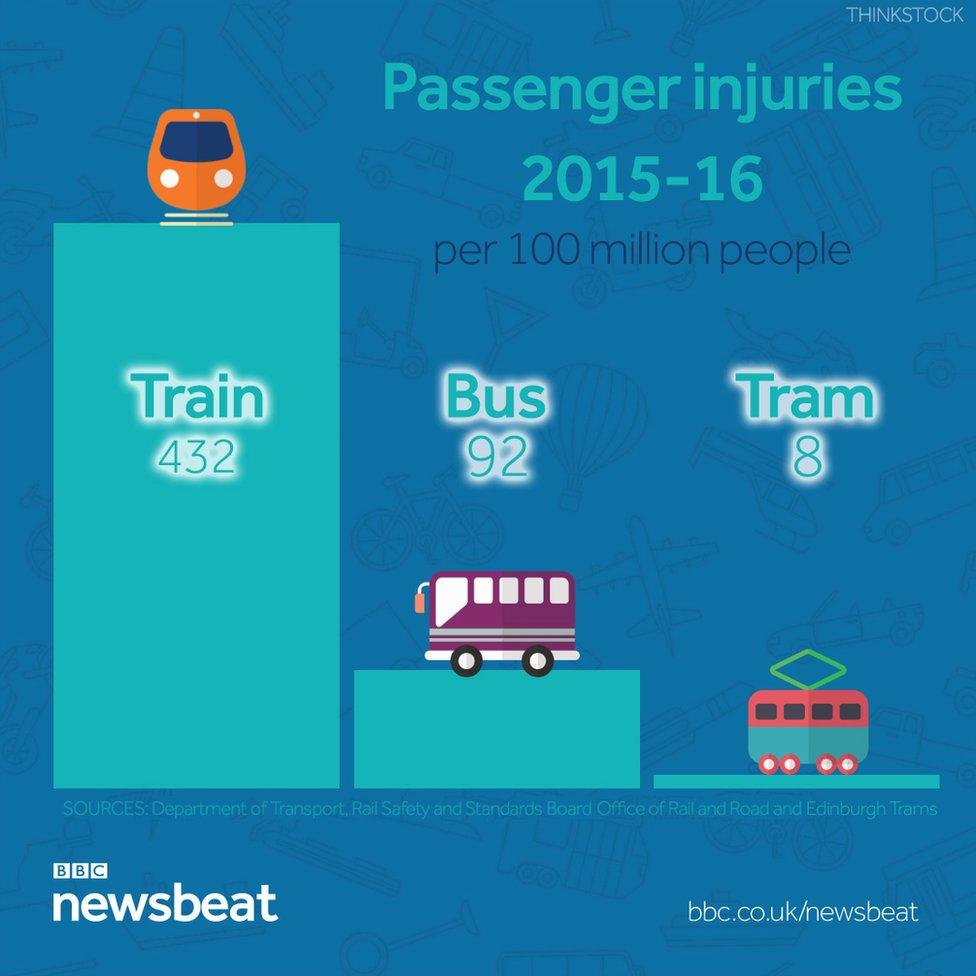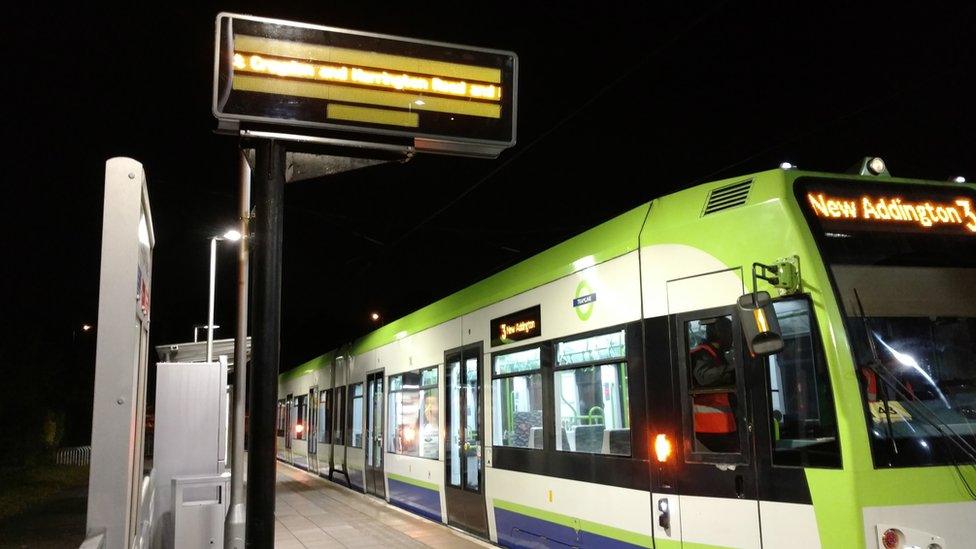How safe are trams? How they compare to buses and trains
- Published

Sheffield trams carried more than 11 million people last year
A tram that derailed in Croydon, south London, killing seven, was travelling at three and a half times the speed limit, investigators have revealed.
It was moving at 43.5mph in a 12mph zone, according to an interim report, external by the Rail Accident Investigation Branch (RAIB).
Millions of people use trams in the UK each week, in cities including Manchester, Sheffield and Edinburgh.
So people are understandably worried. Should they be?
Trains and tube trains use technology to prevent accidents, but what about the UK's trams?
Unlike trains, trams are not fitted with automatic brakes.
On the London Underground drivers must hold down a lever to move. If the driver falls asleep the train just stops.
It's a Metrolink (or Metro) if you live in Manchester and just a tram if you live in Sheffield, Nottingham, Newcastle, Birmingham or Croydon. Whichever city you live in, millions of us use them to get to school and work.
Latest figures from the Department of Transport for 2015/16 show the Croydon tram carried 27 million passengers in that period, but it's trams in the north that passengers use the most.
Newcastle's tram system carries 40.3 million people annually and Manchester's Metrolink 34.3 million. In Edinburgh 5.3 million journeys are made each year.
So how safe are trams?
Obviously there are some accidents.
The RAIB investigates them and since 2005 it has conducted 29 investigations, external as well as Croydon.
How does this compare to other modes of public transport?
According to Andrew Braddock from UK Tram you are:
15 times safer travelling by tram than by bus
24 times more times safer on a bus than in a car
Newsbeat took a look at the numbers.
First we found out how many passengers used each method of transport over the period June 2015 to June 2016.
Then we found out how many injuries were reported (from minor injuries to fatalities) and worked it out per 100 million people.
This is how trams stack up when compared to other public transport, according to the data

So the numbers show that trams are, overall, 12 times safer than buses in the UK.
And they are more than 50 times safer than trains, again, according to this data.
"We have the safest and fastest growing railway in Europe," the Department of Transport told Newsbeat.
"We are delivering the biggest rail modernisation programme for over a century, investing more than £38bn in our network to improve journeys making them safer, faster and more comfortable."
Trains, buses and trams remain statistically a much safer way of getting about.
Department of Transport figures show there were 111,707 car accidents reported in the UK in 2015 alone.
Find us on Instagram at BBCNewsbeat, external and follow us on Snapchat, search for bbc_newsbeat
- Published11 November 2016

- Published11 November 2016
